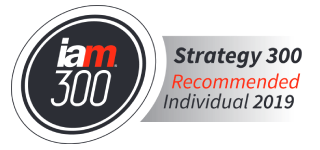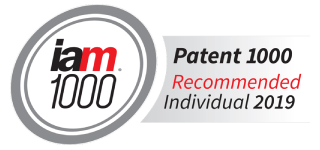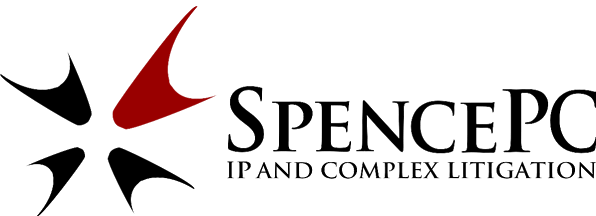Services
Practice Areas
Why SpencePC?
Clients choose SpencePC because we do outstanding work for fair compensation. Unlike our competitors, we encourage the use of alternative-fee agreements that more closely align our clients’ interests with the Firm’s interests. As a result, our clients pay only for the value they receive.
Our Philosophy
Our philosophy is simple: be outstanding and offer a unique value proposition. Hourly billing creates the wrong incentive for attorneys to work longer, not smarter. Instead, we encourage alternative-fee arrangements that reward success and efficiency. By doing so, our attorneys remain focused on obtaining the best results for our clients in the most cost-efficient manner.
Our Skills
We are attorneys who specialize in intellectual property and complex litigation. We hold science, engineering, and law degrees from the nation’s top schools. Following our education, each of us received years of additional training from prestigious, top-tier law firms. Our billing model ensures we remain focused on obtaining the best results in the most cost-efficient manner.
Associations & Accolades
The Term ‘Inventor’ and its Growing Definition: Artificial Intelligence’s Impact on Inventorship
By: Gopal Gannamraj, AJ Wenn, and Alok Parikh
Can artificial intelligence systems be treated as an inventor? If so, what ownership rights flow to the owner of the artificial intelligence system? As some of the biggest technology and pharmaceutical companies in the world continue to invest heavily into their artificial intelligence systems, the USPTO has been faced with addressing these questions. Under the United States Patent Act, the term ‘inventor’ is defined as being an individual or the individuals collectively who “invented or discovered the subject matter of the invention.” While inventorship has historically been restricted to humans, the advent of improved artificial intelligence is forcing the USPTO to reevaluate its position. Accordingly, in August 2019, the USPTO issued a “Request for Comments on Patenting Artificial Intelligence Inventions” and is expected to provide a policy paper based on those comments later this year. 1
The Artificial Inventor Project (“AIP”) is dedicated to seeking intellectual property rights arising from the use of an artificial intelligence system as an inventor. 2 The work done by the AIP has raised several interesting questions regarding inventorship. The AIP believes that patent laws should allow artificial intelligence systems to be listed as the inventor, while the owner of the artificial intelligence system can be the assignee or owner of those patents. To further the debate, in August 2019, the AIP filed two patent applications that listed an artificial intelligence system as the inventor. Neither invention involved any human intervention. One patent application is for an improved beverage container and while the second patent application is directed to a device/method for attracting enhanced attention ( i.e. , a neural flame used during search-and-rescue missions). 3
Both patent applications list the inventor as Device for Autonomous Bootstrapping of Unified Sentience (“DABUS”). DABUS is an artificial intelligence system that was developed by Stephen Thaler, CEO of Imagination Engines, to generate ideas and determine which are novel and the most useful or valuable. 4 Specifically, DABUS was not created to solve any single problem or trained on any of specific data relevant to these two inventions., Rather, DABUS independently created inventions to solve a previously un-identified problem. DABUS, although trained to develop new ideas by a human, created the two inventions autonomously and accordingly, AIP named DABUS as the inventor.
While the number of patent applications directed to artificial intelligence being filed at the USPTO continues to grow, the DABUS patents are the first to name an artificial intelligence system as an inventor. As artificial intelligence systems grow more powerful, innovations developed by these artificial intelligence systems will become more common. With the prevalence of artificial intelligence technology and the USPTO facing questions regarding the concept of inventorship as it pertains to artificial intelligence, this issue is one to be closely monitored.
Upon issuance of the USPTO policy paper addressing Patenting Artificial Intelligence Inventions, SpencePC will publish a follow up article to address any substantive changes to the law. If you have any questions about inventorship, generally, or inventorship as related to artificial intelligence, please feel free to contact SpencePC. Our attorneys have experience litigating in a variety of venues, including the Northern District of Illinois, District of Delaware, Northern District of California, Eastern District of Texas, and Western District of Texas. We are also happy to discuss any IP issues you may face, including patent litigation, patent applications and prosecution, trademark applications and prosecution, copyright filings, trade secrets, or other complex litigation matters.
1
( See
https://www.federalregister.gov/documents/2019/08/27/2019-18443/request-for-comments-on-patenting-artificial-intelligence-inventions) (last accessed March 30, 2020).
2
( See
http://artificialinventor.com/patent-applications/) (last accessed March 30, 2020).
3
Id.
4
Id.
The post The Term ‘Inventor’ and its Growing Definition: Artificial Intelligence’s Impact on Inventorship appeared first on SpencePC.











